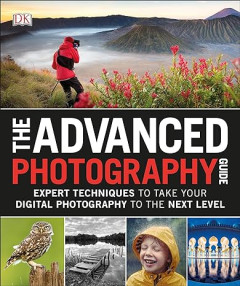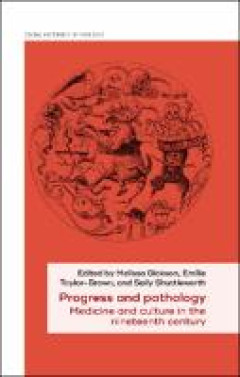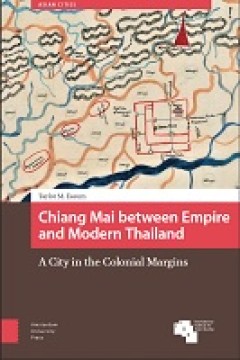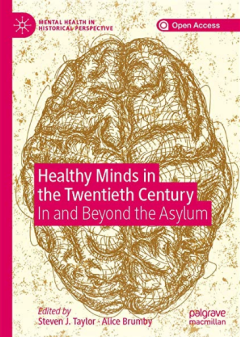Ditapis dengan

E-book Introduction to Biological Aging Theory
Why do we age? The answer to this question is critical to our ability to prevent and treat highly age-related diseases such as cancer and heart disease that now cause the majority of deaths in the developed world. For centuries aging has been considered an unalterable and therefore untreatable condition. We can find treatments for individual diseases but not for aging. Consequently, the effecti…
- Edisi
- -
- ISBN/ISSN
- 9780978870911
- Deskripsi Fisik
- 33 halaman, ilus
- Judul Seri
- -
- No. Panggil
- 612.67 GOL i 002906-eB-0122
E-book The Demography of Disasters : Impacts for Population and Place
The demographic make-up of populations at the time of disaster determines whois impacted and the extent of impacts on residents and others. Improving technolo-gies, improved warning systems, investments in disaster mitigating infrastructureand improving community preparedness and response in the face of disasters areexamples of attempts to reduce disaster impacts. While a range of studies havel…
- Edisi
- -
- ISBN/ISSN
- 9783030499204
- Deskripsi Fisik
- 277 hlm
- Judul Seri
- -
- No. Panggil
- 304.6 AXE t

E-book The Advanced Photography Guide: Expert Techniques to Take Your Digital…
Are you looking to improve your photography repertoire? Take your photography skills and technique to the next level with this inspiring and informative guide. Featuring a comprehensive range of topics from experimenting with lenses, exposure, and aperture to useful post-production techniques, the easy-to-follow step-by-step tutorials show you how to master the functions on your cameras and …
- Edisi
- -
- ISBN/ISSN
- 9781465473561
- Deskripsi Fisik
- 194 halaman, ilus.
- Judul Seri
- -
- No. Panggil
- 770 TAY t

E-Book Progress and Pathology: Medicine and Culture in the Nineteenth Century
This collaborative volume explores changing perceptions of health and disease in the context of the burgeoning global modernities of the long nineteenth century. During this period, popular and medical understandings of the mind and body were challenged, modified, and reframed by the politics and structures of ‘modern life’, understood in industrial, social, commercial, and technological te…
- Edisi
- -
- ISBN/ISSN
- 9781526147547
- Deskripsi Fisik
- 389 halaman
- Judul Seri
- -
- No. Panggil
- 362.1068 DIC p

E-Book Chiang Mai between Empire and Modern Thailand: A City in the Colonial …
Urban histories tend to be dominated by large, global cities. But what does the history of the modern, colonial era look like from the perspective of smaller cities? By shifting the focus from the metropolis to the secondary city of Chiang Mai, this study provides an alternative narrative of the formation of the modern Thai state that highlights the overlap between European, American, and Siame…
- Edisi
- -
- ISBN/ISSN
- 9789463726467
- Deskripsi Fisik
- 289 halaman
- Judul Seri
- -
- No. Panggil
- 959.3 EAS c
E-book Imperial Standard : Imperial Oil, Exxon, and the Canadian Oil Industry…
For one hundred and thirty years, from its establishment in 1880 to 2010, Imperial Oil Company Ltd. was the largest petroleum company in Canada; in 2009, Suncor merged with Petro Canada and Imperial fell to second place. Even so, in 2018 Imperial remained among the top ten non-financial companies in Canada, ranked by revenues and assets. The third ranked company, Enbridg…
- Edisi
- -
- ISBN/ISSN
- 9781773850375
- Deskripsi Fisik
- 383 hlm
- Judul Seri
- -
- No. Panggil
- 665.5 TAY i
E-book The Visnu Purana : Ancient Annals of the God with Lotus Eyes
The purāṇas are an important genre of Hindu literature.1 Together they constitute an authoritative archive—cosmogony and cosmology, theology and mythology as well as orthodoxy and orthopraxis—for Hindu traditions. Many important narratives relating to the deities Viṣṇu–Kṛṣṇa, Śiva and the great goddess Devī are found in their most authoritative form in pur…
- Edisi
- -
- ISBN/ISSN
- 9781760464417
- Deskripsi Fisik
- 579 hlm
- Judul Seri
- -
- No. Panggil
- 294 TAY t

E-book Healthy Minds in the Twentieth Century : In and Beyond the Asylum
This open access edited collection contributes a new dimension to the study of mental health and psychiatry in the twentieth century. It takes the present literature beyond the ‘asylum and after’ paradigm to explore the multitude of spaces that have been permeated by concerns about mental well-being and illness. The chapters in this volume consciously attempt to break down institutional wal…
- Edisi
- -
- ISBN/ISSN
- 9783030272753
- Deskripsi Fisik
- xiii, 274 hlm. : ill.
- Judul Seri
- -
- No. Panggil
- 362.1 TAY h
E-book Empire Under the Microscope : Parasitology and the British Literary Im…
Contemporary British parasitologist Frank Cox has explored how the question of what parasitology is has shaped the history of the discipline. Given that the parasitic lifestyle is common to helminths, bacteria, viruses, protozoa, fungi, parasitoid insects, some plants like mistletoe, and even birds like cuckoos, there is—and has historically been—a need to narrow down the subject …
- Edisi
- -
- ISBN/ISSN
- 9783030847173
- Deskripsi Fisik
- 303 hlm
- Judul Seri
- -
- No. Panggil
- 616.96 TAY e
E-book PestSmart Diagnostic Field Guide
The process of diagnosing a plant health problem without any specialised laboratory equipment is called ‘field diagnosis’. Field diagnosis involves careful observation of the symptoms on a plant and linking those symptoms with possible causes. While some plant health problems are relatively easy to diagnose, others can be very difficult for a number of reasons. For instance, there may be mu…
- Edisi
- -
- ISBN/ISSN
- 9781789240061
- Deskripsi Fisik
- 104 hlm
- Judul Seri
- -
- No. Panggil
- 632.7 TAY p
 Karya Umum
Karya Umum  Filsafat
Filsafat  Agama
Agama  Ilmu-ilmu Sosial
Ilmu-ilmu Sosial  Bahasa
Bahasa  Ilmu-ilmu Murni
Ilmu-ilmu Murni  Ilmu-ilmu Terapan
Ilmu-ilmu Terapan  Kesenian, Hiburan, dan Olahraga
Kesenian, Hiburan, dan Olahraga  Kesusastraan
Kesusastraan  Geografi dan Sejarah
Geografi dan Sejarah